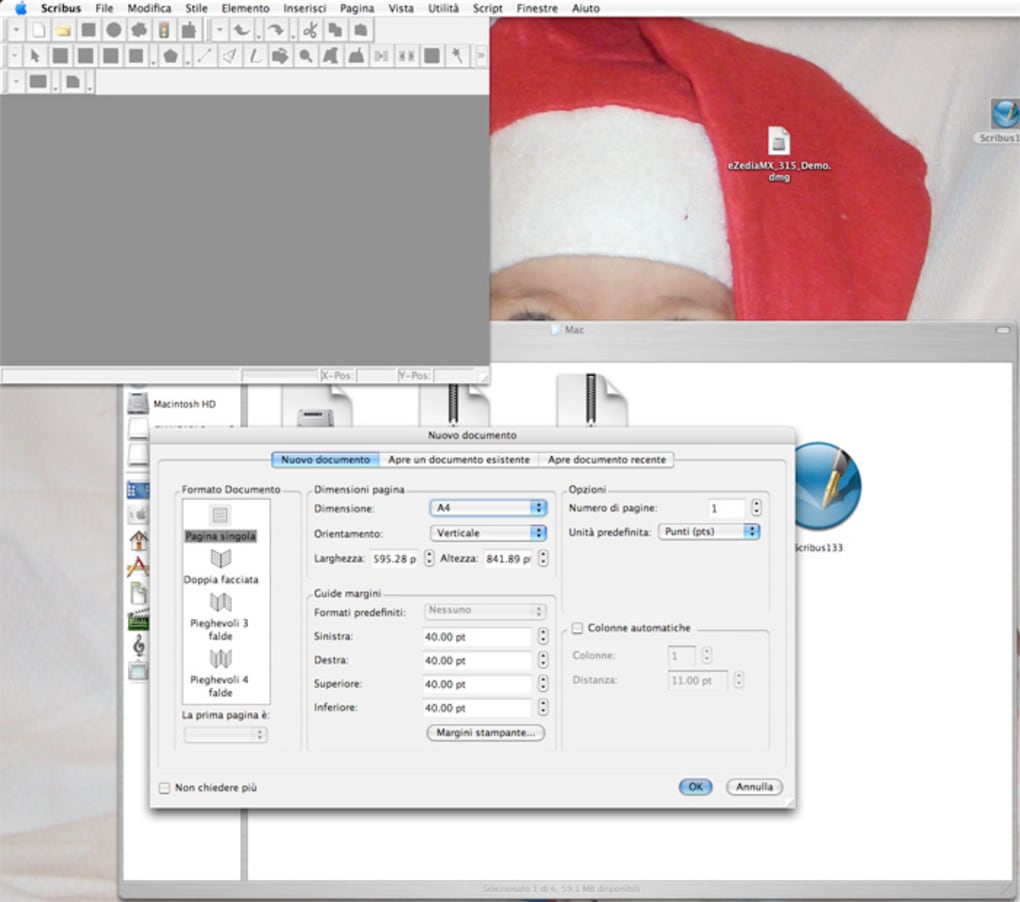Scribus 64-bit is an Open Source program that brings professional page layout to Linux, BSD UNIX, Solaris, OpenIndiana, GNU/Hurd, Mac OS X, OS/2 Warp 4, eComStation, Windows and Haiku desktops with a combination of press-ready output and new approaches to page design. Underneath a modern and user-friendly interface, Scribus. Should scribus create the thumbnails to be shown, when saving the file or it is the plugin that creates the screenshot on the fly? In the first case, i guess that it would not that hard to create such a plugin (scribus can create PNG for pages), in the second case, we need to call scribus without the GUI, and this is only (and in limited way. Welcome to Scribus, a page layout program for Linux, FreeBSD, PC-BSD, NetBSD, OpenBSD, Solaris, OpenIndiana, Debian GNU/Hurd, Mac OS X, OS/2 Warp 4, eComStation, Haiku and Windows. Since its humble beginning in the spring of 2001, Scribus has evolved into one of. Well, yes, but in a week or two we’ll be checking it out under Mac OS X. The first step in DTP is to define the shape and size of your page, along with some common parameters: margins and columns. As Scribus cannot import Quark or InDesign documents, it is. Scribus is available for many operatings systems and comes in basically two flavors, stable and development. For almost all production work, we recommend that you use the stable version. In our development version lots of things may be regularly changing as.
Select the correct paper format for the project; indicate the size and orientation; don't forget to adjust the margins, which are fundamental for getting a balanced design. It's also possible to use templates.
The next step consists of drawing the screentone over which the elements will be placed and define the sample pages. This characteristic allows you to save time not having to create the base page over and over again. Another way ot save time is to create personalized paragraph and line stiles (threads).
The elements that you insert in the page (text boxes, images, tables, shapes, polygons, Bezier curves...) can be grouped to facilitate page editing and locked to prevent unwanted changes.
With support for CMYK and ICC color administration, Scribus can save projects in PDF format without requiring help from another application. What's more, it also allows you to create PDF documents with editable controls (text boxes, check boxes, lists, etc.).

Official files are being served from a site called SourceForge, so do not be alarmed when clicking on a download link brings you to a SourceForge download page.
SourceForge is used by software projects as a means to offer fast and easy downloads and installation. For more information about SourceForge, check here and here.
Please note that not all download links mentioned below are official ones, i.e., files/packages whose integrity has been checked by the Scribus Team.
Stable
The current stable release is 1.4.6
| Solaris and OpenIndiana (IPS packages from project SFE) - (build recipes) |

| Scribus RPMs for all supported versions of OpenSUSE, SUSE Linux Enterprise Desktop, SUSE Linux Enterprise Server, Fedora, Red Hat Enterprise Linux, and CentOS. |
Developmental
This is where the exciting new features of Scribus are going. However, there could be many stability problems due to frequent changes, so you are only advised to use this version for small very specific tasks and for keeping abreast of the Scribus development, but not for day-to-day production work.
Source code for compilation
See Official:Compile_with_CMake for building instructions.

Scribus For Mac Review
| Stable branch: Download and compile the 1.4.x sources if you know that it contains a patch for a bug you're facing in Scribus 1.4 |
| svn://scribus.net/branches/Version14x/Scribus - Scribus 1.4.x.svn (developmental). |
| Developmental code: Download the 1.5 SVN sources if you want to try out the newest Scribus features. You should probably not use this code in production. |
| svn://scribus.net/trunk/Scribus - Scribus 1.5.0svn (trunk). |
Some Notes: You must have subversion to run this. |